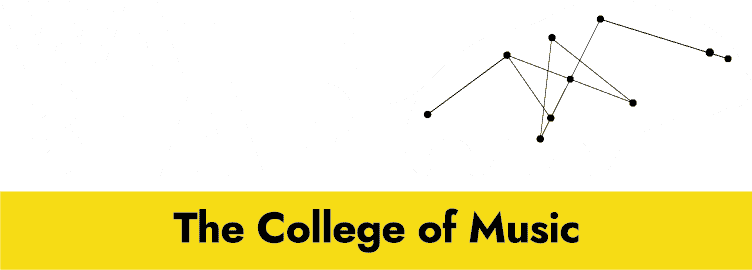JOIN US SEPTEMBER 2024 - APPLY TODAY OR BOOK YOUR PLACE ON ONE OF OUR OPEN DAYS IN BRIGHTON OR SHEFFIELD
JOIN US SEPTEMBER 2024 - APPLY TODAY OR BOOK YOUR PLACE ON ONE OF OUR OPEN DAYS IN BRIGHTON OR SHEFFIELD

Carlos Santana perhaps needs no introduction. He has been one of the main public faces of guitar herodom for many years. His unique style mixes blues, rock and Latin elements of music in a way that hadn’t been heard before.
First of all, let’s take a look at what he uses in the guitar and amp department. He is known for playing PRS guitars - he has his own signature model guitars with PRS which is based on a Les Paul style design. He appeared at Woodstock in 1969 equipped with a Les Paul and two P90 pickup and his current signature PRS guitar features two Humbucking pickups.
The Les Paul/PRS sound itself is a lot thicker and warmer than a Strat or Tele sound which is, of course, a key element of Santana’s core tone. He was also known for using Mesa Boogie amps, however he has also plugged into multiple amps such as Dumble and Bluetone. His association with Mesa Boogie really put the Amp company on the map, even putting the ‘Boogie’ in Mesa Boogie - legend says he tried a Mesa amp and said “this thing really boogies” and the name stuck. The Mesa Boogie Mark 1 is mixed with a Dumble ‘Overdrive Reverb’ amp to get his core tone.
Don’t worry, we don’t have to break the bank to get a similar sound to Santana. What we need to ‘emulate’ his tone is a humbucking guitar, something with a thickish neck, and an amp with a nice amount of gain/sustain, but not a metal type sustain. This can be done by focusing on using the amps drive channel alone if you have a Fender Blues Junior or something along those lines. You could also use a Fuzz Pedal on a medium setting to get a similar vibe. A tiny bit of hall reverb and you should be there. Rolling the tone control back on the bridge pickup should help warm up the sound. The rest is in the hands and the music.
Articulation is everything. In his best moments, Santana sounds like he is singing through the guitar. So, focus on developing dynamic control of the left and right hand through pick attack, fretting hand hammer ons and pull offs. My advice is to learn his lines, play along to his solos and really lock in with the timing and dynamics of his phrasing, this will teach you more about how to ‘sound like’ Santana than buying any pedal or learning licks from TAB would do.
Santana is great with ‘embellishing’ phrases. Another aspect of his phrasing within Minor Pentatonic is that he’ll use notes from the mode around it to add details. Often, he’ll articulate these with quick trills and hammer ons. Bending within the diatonic scale is something else which gives his sound some distinction for the time. Mixing these diatonic melodies with pentatonic blues licks. Sequences are also important, being able to move up and down diatonic scales following a melodic pattern of 3 or 4 notes. This creates a cascading effect which again offsets the bluesy phrases.
His vocabulary on the guitar is based in blues and Latin styles of music. Blues, of course, uses a lot of Minor Pentatonic & Blues Scales. So understanding how to navigate this pattern will help when picking up some Santana phrases. He often adds the 9th to the Minor Pentatonic which is a way of expanding that tonal pallet. However he goes further with diatonic scales, in particular Dorian, which is the second mode of the Major scale. This scale is basically a pentatonic (1, b3, 4, 5, b7) with an added 2nd/9th & 6th/13th.
A lot of his songs follow this mode and the chords that come with it (for example Am7 to D7 which is an ii to V movement in G Major). This scale is used in many different styles of music, but is perhaps most ‘obvious’ to the listener in this Latin blues rock style. Santana will also use the Natural Minor Scale (1, 2, b3, 4, 5, b6, b7) - Black Magic Woman is a good example of this with the chordal movement of vi to ii (for example Dm to Gm). Often songs will also include an interchange of modes moving between different tonalities based on these basic sounds.
It’s important to use space! Leaving space between phrases, developing themes, repeating patterns using the scale approaches from the last paragraph. When you want to add some heat, you speed up a little or simply play phrases closer together. Again, focusing on the singing aspect of phrasing will help you improve in the right ball park.
I can’t stress enough, however, the importance of learning licks by ear from your favourite artists to get a deeper understanding of their phrasing. Not only will you learn some cool licks, you’ll pick up the rhythmic and melodic habits of the player. The information won’t just enter your fingers, it’ll enter your melodic tool box in your brain! So endeavour to learn by ear, slowly, bit by bit, aand try and understand the core elements. Before you know it, you’ll be able to emulate your favourite players convincingly.
Good luck!
To find out more, check out our courses here.

- ‘Water bear’ is the common name for a Tardigrade.
- Tardigrades are micro creatures, found everywhere on earth.
- They are the most resilient creatures known.
- They can survive and adapt to their surroundings, even in outer space.
- Their resilience and ability to adapt and survive inspires us in everything we do. We love them.


WaterBear Education Ltd, Hanover House,
118 Queens Road, Brighton BN1 3XG, UK Map
Email: [email protected]
Tel: +44 (0) 1273 726230
WaterBear Sheffield, Unit 4, Gatecrasher,
49 Eyre Lane, Sheffield S1 4RB, UK
Email: [email protected]
Tel: +44 (0) 1143 992720

WaterBear Education Ltd, Hanover House,
118 Queens Road, Brighton BN1 3XG, UK Map
Email: [email protected]
Tel: +44 (0) 1273 726230
WaterBear Sheffield, Unit 4, Gatecrasher,
49 Eyre Lane, Sheffield S1 4RB, UK
Email: [email protected]
Tel: +44 (0) 1143 992720
- ‘Water bear’ is the common name for a Tardigrade.
- Tardigrades are micro creatures, found everywhere on earth.
- They are the most resilient creatures known.
- They can survive and adapt to their surroundings, even in outer space.
- Their resilience and ability to adapt and survive inspires us in everything we do. We love them.
